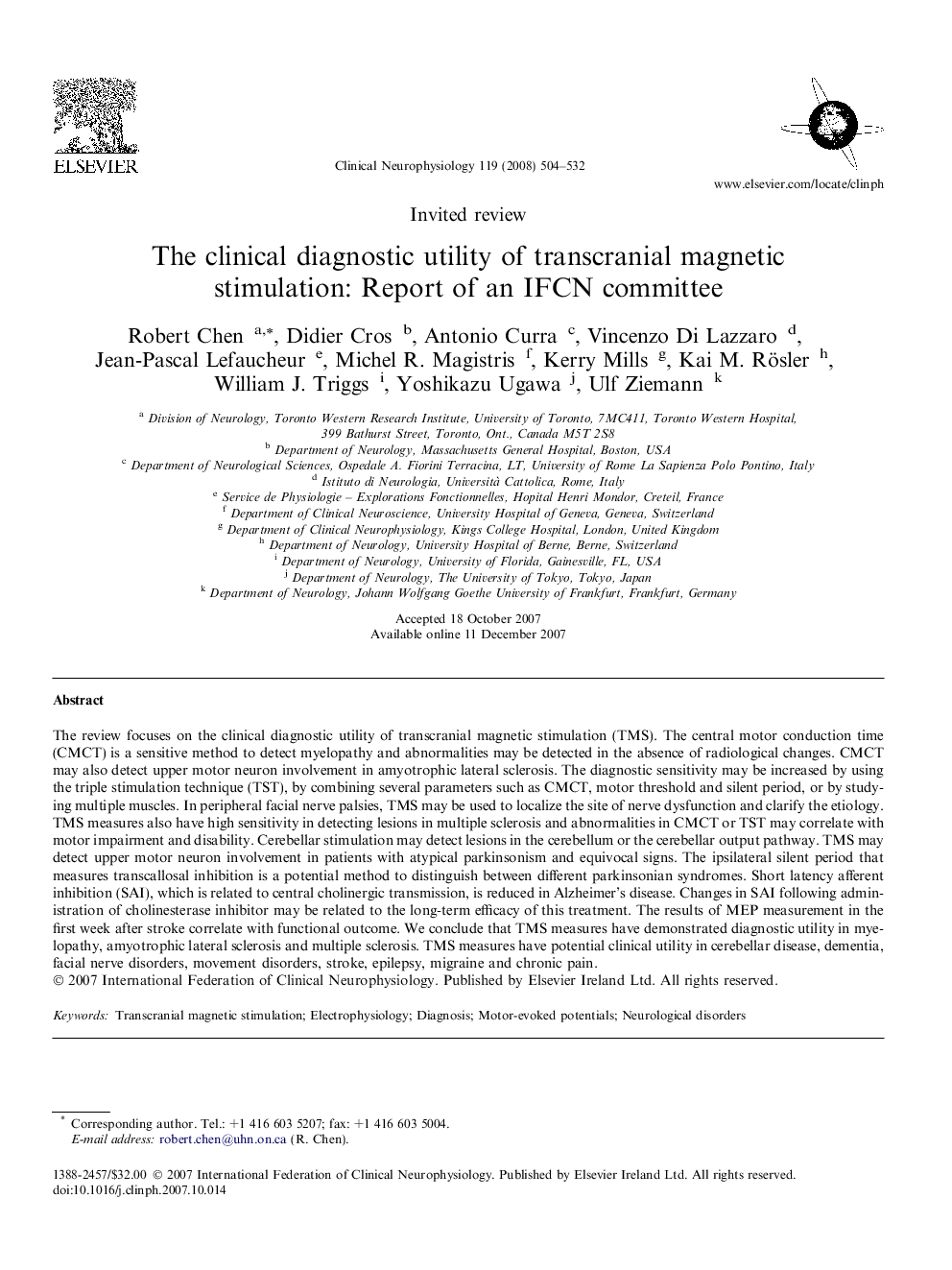| Article ID | Journal | Published Year | Pages | File Type |
|---|---|---|---|---|
| 3046587 | Clinical Neurophysiology | 2008 | 29 Pages |
The review focuses on the clinical diagnostic utility of transcranial magnetic stimulation (TMS). The central motor conduction time (CMCT) is a sensitive method to detect myelopathy and abnormalities may be detected in the absence of radiological changes. CMCT may also detect upper motor neuron involvement in amyotrophic lateral sclerosis. The diagnostic sensitivity may be increased by using the triple stimulation technique (TST), by combining several parameters such as CMCT, motor threshold and silent period, or by studying multiple muscles. In peripheral facial nerve palsies, TMS may be used to localize the site of nerve dysfunction and clarify the etiology. TMS measures also have high sensitivity in detecting lesions in multiple sclerosis and abnormalities in CMCT or TST may correlate with motor impairment and disability. Cerebellar stimulation may detect lesions in the cerebellum or the cerebellar output pathway. TMS may detect upper motor neuron involvement in patients with atypical parkinsonism and equivocal signs. The ipsilateral silent period that measures transcallosal inhibition is a potential method to distinguish between different parkinsonian syndromes. Short latency afferent inhibition (SAI), which is related to central cholinergic transmission, is reduced in Alzheimer’s disease. Changes in SAI following administration of cholinesterase inhibitor may be related to the long-term efficacy of this treatment. The results of MEP measurement in the first week after stroke correlate with functional outcome. We conclude that TMS measures have demonstrated diagnostic utility in myelopathy, amyotrophic lateral sclerosis and multiple sclerosis. TMS measures have potential clinical utility in cerebellar disease, dementia, facial nerve disorders, movement disorders, stroke, epilepsy, migraine and chronic pain.
